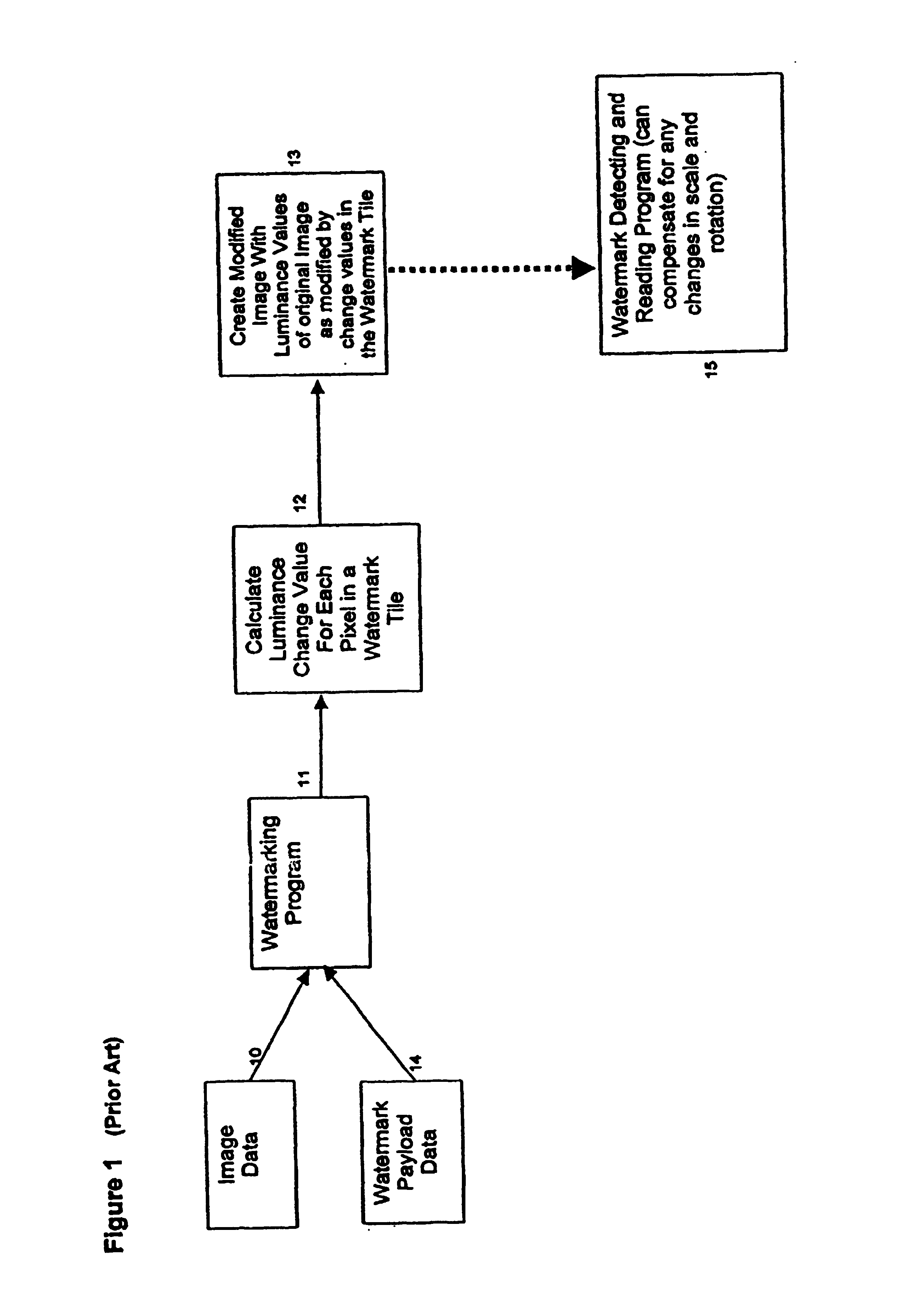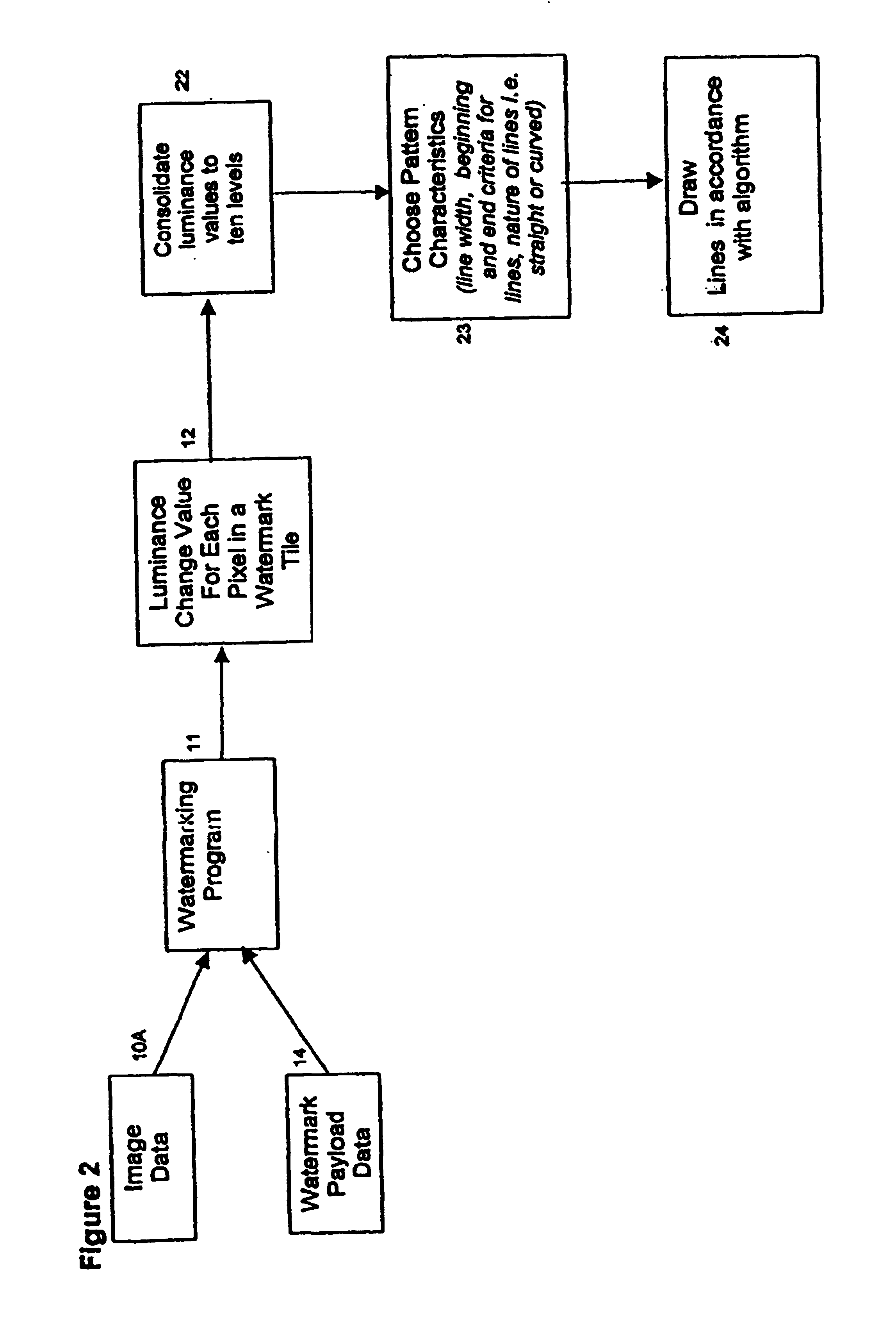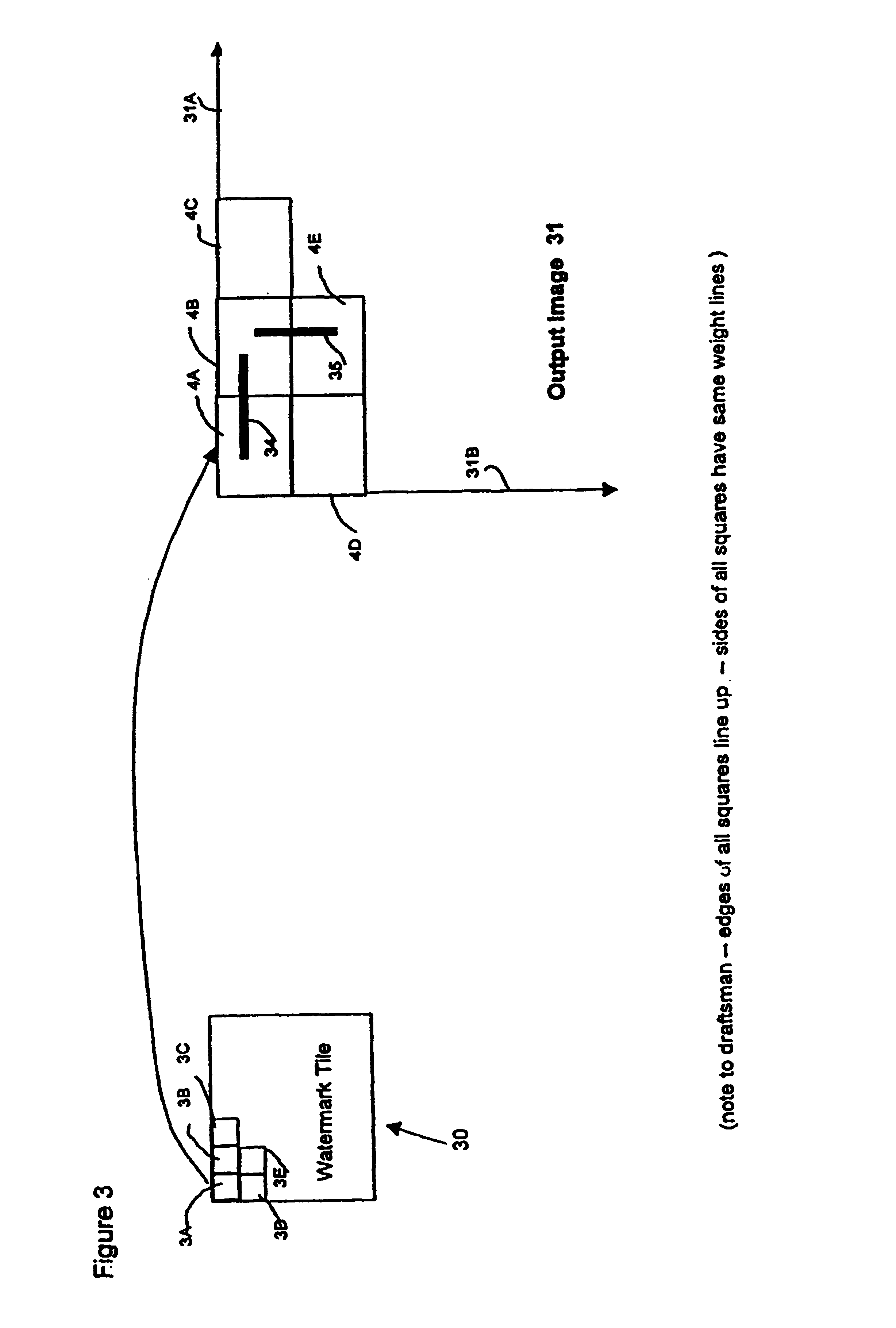Printing media and methods employing digital watermarking
- Summary
- Abstract
- Description
- Claims
- Application Information
AI Technical Summary
Benefits of technology
Problems solved by technology
Method used
Image
Examples
Embodiment Construction
[0041]In accordance with one aspect, an embodiment of the invention is a substrate to which final user printing can later be applied to yield a final printed object. The substrate is characterized by having been processed prior to final user printing to yield a steganographic digital watermark pattern thereon. This pattern does not impair subsequent use of the substrate, yet conveys plural bits of digital information. The presence of such information is not apparent to a human observer of the substrate, but can be detected by visible-light scanning of the substrate to yield data from which the plural bit information can be recovered.
[0042]The steganographic digital watermark pattern can be formed by ink, which may be, e.g., speckled across at least part of the substrate. Or the ink can form a mesh of thin lines. (For example, the mesh can comprise a single pattern that is tiled across the substrate, with the pattern being arranged so that lines located at adjoining tile edges meet w...
PUM
| Property | Measurement | Unit |
|---|---|---|
| Pressure | aaaaa | aaaaa |
| Area | aaaaa | aaaaa |
| Spectrum | aaaaa | aaaaa |
Abstract
Description
Claims
Application Information
 Login to View More
Login to View More - R&D
- Intellectual Property
- Life Sciences
- Materials
- Tech Scout
- Unparalleled Data Quality
- Higher Quality Content
- 60% Fewer Hallucinations
Browse by: Latest US Patents, China's latest patents, Technical Efficacy Thesaurus, Application Domain, Technology Topic, Popular Technical Reports.
© 2025 PatSnap. All rights reserved.Legal|Privacy policy|Modern Slavery Act Transparency Statement|Sitemap|About US| Contact US: help@patsnap.com



